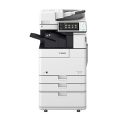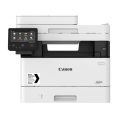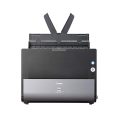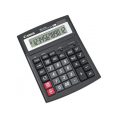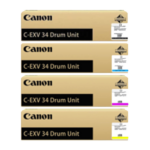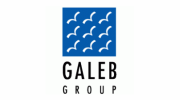
In other words, the shareholders or partners own the remainder of assets once all of the liabilities are paid off. Receivables arise when a company provides a service or sells a product to someone on credit. An asset is a resource that is owned or controlled by the company to be used for future benefits. Some assets are tangible like cash while others are theoretical or intangible like goodwill or copyrights.

Effects of Transactions on Accounting Equation
The global adherence to the double-entry accounting system makes the account-keeping and -tallying processes more standardized and foolproof. For another example, consider the balance sheet for Apple, Inc., as published in the company’s quarterly report on July 28, 2021. By decomposing equity into component parts, analysts can get a better idea of how profits are being used—as dividends, reinvested into the company, or retained https://www.bookstime.com/ as cash.

Assets in Accounting: A Beginners’ Guide

This transaction brings cash into the business and also creates a new liability called bank loan. This transaction also generates a profit of $1,000 for Sam Enterprises, which would increase the owner’s equity element of the equation. On the other side of the equation, a liability (i.e., accounts payable) is created. On 2 January, Mr. Sam purchases a building for $50,000 for use in the business.

Ask a Financial Professional Any Question
Individual transactions which result in income and expenses being recorded will ultimately result in a profit or loss for the period. The term capital includes the capital introduced by the business owner plus or minus any profits or losses made by the business. Profits retained in the business will increase capital and losses will decrease capital. The accounting equation will always balance because the dual aspect of accounting for income and expenses will result in equal increases or decreases to assets or liabilities.
Which three components make up the Accounting Equation?
This statement reflects profits and losses that are themselves determined by the calculations that make up the basic accounting equation. In other words, this equation allows businesses to determine revenue as well as prepare a statement of retained earnings. This then allows them to predict future cash flow profit trends and adjust business practices accordingly.
What is the difference between an asset and a liability?
The assets of the business will increase by $12,000 as a result of acquiring the van (asset) but will also decrease by an equal amount due to the payment of cash (asset). Required Explain how each of the above transactions impact the accounting equation and illustrate the cumulative effect that they have. We will now consider an example with various transactions within a business to see how each has a dual aspect and to demonstrate the cumulative effect on the accounting equation.
What if any one of these elements changes?
- Under the accrual basis of accounting, expenses are matched with revenues on the income statement when the expenses expire or title has transferred to the buyer, rather than at the time when expenses are paid.
- When a company purchases inventory for cash, one asset will increase and one asset will decrease.
- Similarly, the business may have unrecorded resources, such as a trade secret or a brand name that allows it to earn extraordinary profits.
- ” The answer to this question depends on the legal form of the entity; examples of entity types include sole proprietorships, partnerships, and corporations.
- The accounting equation states that a company’s total assets are equal to the sum of its liabilities and its shareholders’ equity.
- Discover which concepts you need to study further and enhance your long-term retention.
Every transaction is recorded twice so that the debit is balanced by a credit. The fundamental accounting equation, also called the balance sheet equation, is the foundation for the double-entry bookkeeping system and the cornerstone of accounting science. In the accounting equation, every transaction will have a debit and credit entry, and the total debits (left side) will equal the total credits (right side). In other words, the accounting equation will always be „in balance“. The accounting equation relies on a double-entry accounting system.
- The articles and research support materials available on this site are educational and are not intended to be investment or tax advice.
- Both liabilities and shareholders’ equity represent how the assets of a company are financed.
- In the coming sections, you will learn more about the different kinds of financial statements accountants generate for businesses.
- In other words, we can say that the value of assets in a business is always equal to the sum of the value of liabilities and owner’s equity.
- The revenue a company shareholder can claim after debts have been paid is Shareholder Equity.
- The difference between the $400 income and $250 cost of sales represents a profit of $150.
- The balance sheet is also referred to as the Statement of Financial Position.
- After almost a decade of experience in public accounting, he created MyAccountingCourse.com to help people learn accounting & finance, pass the CPA exam, and start their career.
- Whatever happens, the transaction will always result in the accounting equation balancing.
- This includes expense reports, cash flow and salary and company investments.
- For example, if a company buys a $1,000 piece of equipment on credit, that $1,000 is an increase in liabilities (the company must pay it back) but also an increase in assets.
- The accounting equation shows the amount of resources available to a business on the left side (Assets) and those who have a claim on those resources on the right side (Liabilities + Equity).
$10,000 of cash (asset) will be received from the bank but the business must also record an equal amount representing the fact that the loan (liability) will eventually need to be repaid. Owner’s or stockholders’ equity also reports the amounts invested into the company by the owners plus the cumulative net income of the company that has not been withdrawn or distributed to the owners. If a transaction is completely omitted from the accounting books, it will not unbalance the accounting equation. After the company formation, Speakers, Inc. needs fundamental accounting equation to buy some equipment for installing speakers, so it purchases $20,000 of installation equipment from a manufacturer for cash. In this case, Speakers, Inc. uses its cash to buy another asset, so the asset account is decreased from the disbursement of cash and increased by the addition of installation equipment.

